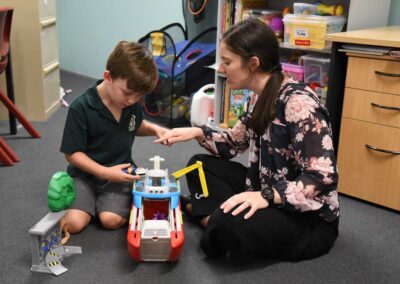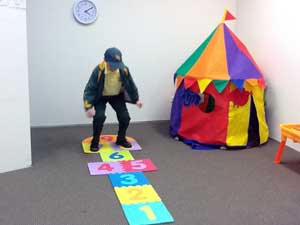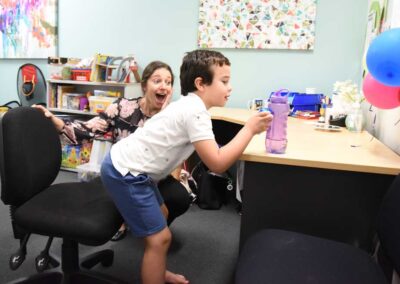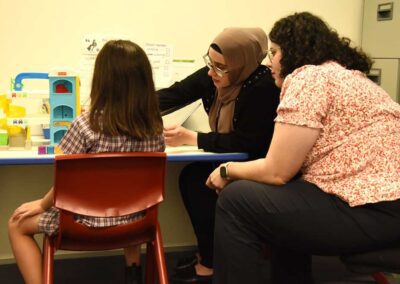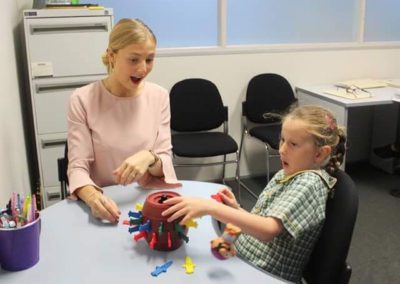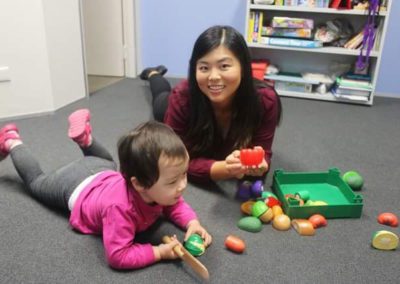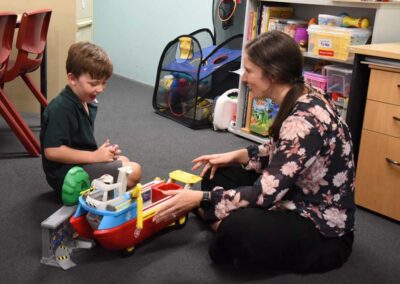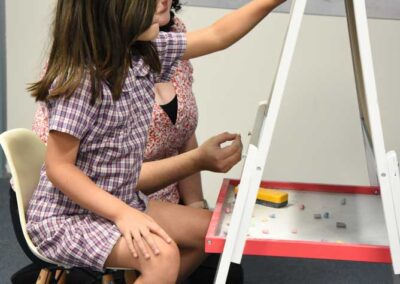
In our increasingly interconnected world, the ability to speak more than one language is not just a skill but an asset. Supporting your child’s bilingual journey at home can significantly enhance their cognitive abilities, cultural awareness, literacy, and communication skills. As a parent, you play a crucial role in fostering their linguistic development.
Here are my top 8 tips for supporting your bilingual child’s language development at home:
1. Create a Language-Rich Environment
The foundation of bilingualism begins with exposure. Surround your child with opportunities to hear and use both languages naturally as often as possible. Label objects around the house in both languages, read bilingual books together, and listen to music or watch videos in different languages. This immersive environment lays the groundwork for language acquisition and reinforces vocabulary and grammar.
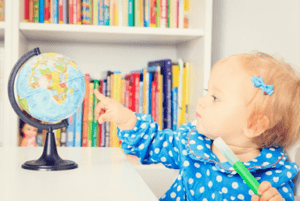
2. Utilize Visuals for Language Learning
Visual aids are powerful tools for language acquisition. Incorporate a variety of visuals, such as posters, objects, facial expressions or dramatic gestures in both languages. Visual prompts during conversation helps your child understand and associate words with their meanings. For example, if you’re discussing animals, show a picture of the animal, act it out and talk about the animal’s personality and physical features in both languages! This will help your child remember the words better.

3. Engage in Responsive Conversations
Build on what your child says to encourage further language development. Respond to their statements in the same language they used, expanding on their ideas and introducing new vocabulary naturally. This technique, known as “language scaffolding”, supports their language skills by providing richer linguistic input and modelling correct usage of the language.
4. Model Language Proficiency
It is best to speak to your child in a language (or languages) that you are fluent in. It isn’t helping your child for them to hear incorrect or ‘broken’ language. Children learn by imitation, so speaking proficiently sets a clear example for them to follow. Use complex sentences, varied vocabulary, and correct grammar. Your language proficiency serves as a benchmark for their own linguistic development.
If your child’s grandparents speak excellent Italian but speak ‘broken’ English, encourage them to talk to your child in Italian! They will hear English modelling from other people in their life, so they won’t be missing out.
5. Establish Language Routines
Consistency is key to language learning. Establish routines where each language has its designated time or activity. For instance, you might speak one language during meals and bedtime routines, while using the other during playtime or storytelling. Consistent exposure helps children differentiate between languages and become comfortable switching between them.
6. Foster Cultural Awareness
Bilingualism is intertwined with cultural understanding. Explore cultural traditions, stories, and celebrations associated with each language. Use visuals such as maps, photos, and videos to introduce your child to different cultures and broaden their worldview. Encourage them to appreciate and respect diverse cultural perspectives through language and cultural exploration.

7. Seek Community Support
Connect with other bilingual families or join language groups where your child can interact with peers who share similar language experiences. Community support provides additional opportunities for language practice, cultural exchange, and emotional support for both you and your child. Attend cultural events or language-related activities together to enrich their bilingual experience.
8. Patience and Persistence
Above all, be patient with your child’s language development. Learning two languages simultaneously can be challenging, and children may mix languages or progress unevenly. Encourage their efforts, provide gentle corrections when needed, and maintain a positive attitude towards language learning. Your support and encouragement are crucial in nurturing their bilingual proficiency over time.
So there you have it. My top 8 tips for nurturing your bilingual child’s language development at home.
By implementing these strategies, you empower your child with the lifelong gift of bilingualism. Beyond the cognitive benefits, bilingual children often demonstrate enhanced problem-solving skills, cultural sensitivity, and opportunities for academic and professional success. As a parent, your commitment to creating a supportive and language-rich environment at home lays a solid foundation for their linguistic and cultural growth. Embrace the journey of bilingualism together, celebrating the richness and diversity that multiple languages bring to your child’s life.


